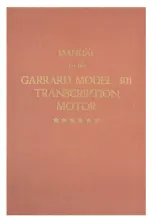
VIII. Device
Storage
and
ASTRO
The device has
three areas for storage
. There are two SD card slots, one internal
micro SD and one external SD/SDHC. There is also an embedded internal storage.
Below, you’ll see all of the storage areas broken down and fully explained:
Name
Capacity
Appears in
ASTRO as
Storage Uses
Internal SD
Storage
Either
2 GB or
4 GB
*
/sdcard
The Android apps you install will write fi le
folders and app content to this removable
storage. You may copy content to this loca-
tion, but be careful of what you delete as it
may impact the function of your apps.
External SD
Storage
Up to
32GB
/sdcard1
This external slot is for standard and SD and
SDHC fl ash memory cards (up to 32GB) and
is useful for storage, or for transferring fi les
to and from your Cruz and your computer.
Internal
Device
Storage
(embedded)
256 MB
/
The Android operating system uses this inter-
nal embedded storage. You may not adminis-
ter these fi les.
To protect your External SD card’s fi le and directory structure integ-
rity, it should be unmounted before removed. To do this, tap Menu >
Settings > SD card & device storage > and under External SD card tap
Unmount SD card. This best practice is not always followed by most
users, and generally no data loss occurs. When this does happen, the
Cruz may attempt to save lost data to a folder called LOST.DIR. This
folder generally has useless data and can be ignored.
ASTRO
is your fi le manager app. Use it to browse your storage
locations and transfer fi les between the internal micro SD card and
the external SD card. It also features an Application Manager to help
install or uninstall your apps, and an SD usage monitor as well. Learn
more about how to use ASTRO at http://www.metago.net/
Protecting Your External SD Card
* Cruz Reader SE models come standard with a 2 GB SD card, Cruz Reader R101 models include a 4 GB SD card
RETURN TO TABLE OF CONTENTS
11













































